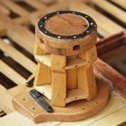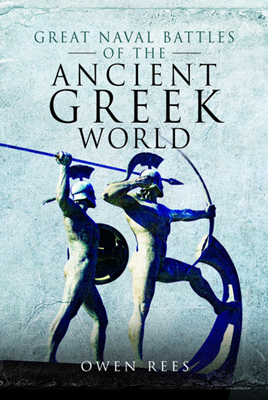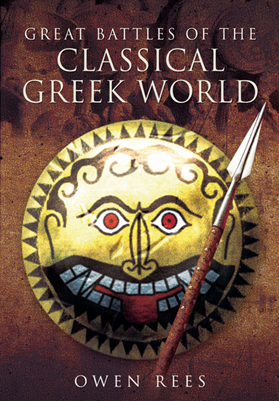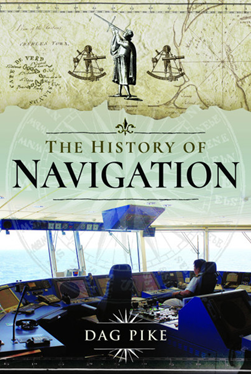-
Posts
2,033 -
Joined
-
Last visited
Content Type
Profiles
Forums
Gallery
Events
Everything posted by tlevine
-
Mitch was a total Gentlemen and I am proud to have served on the Board with him. He was also my friend. He will be greatly missed.
-

Replacement motor for Preac saw
tlevine replied to Kevin Kenny's topic in Modeling tools and Workshop Equipment
I have the Ship Ahoy motor installed on my Preac. It is a lot more powerful than the original equipment. -
Your model is too good to put on a flat decoration instead of a quarter gallery. I compared the quarter gallery on Fly with Atalanta. The only differences are the details of the carvings and the angle of the center bank of windows. I assume you have TFFM Vol.2. Follow David's instructions and you should be fine. Also, take a look at Bill Maxwell's Fly on the Admiralty Models site. It gives a good perspective of the depth of the structure.
- 467 replies
-
- fly
- victory models
-
(and 1 more)
Tagged with:
-
Your best bet is to go to a place like FedEx that has large scale printers. Then be prepared to experiment with the enlargement ratio, obviously for a price. Enlarge all your plans on the same day, on the same copier for the most accurate results. If your enlargement is off by a bit, all of the plans will be off by the same percentage.
-

glues decking sheets
tlevine replied to Kurt Johnson's topic in Building, Framing, Planking and plating a ships hull and deck
Are you gluing this to deck beams or a sub-deck? For beams definitely go with PVA. I use Titebond II. For a sub-deck, consider using contact cement. It will handle the sheer and camber but once you put it on the sub-deck, there is no moving it around. -

H M Mortar
tlevine replied to Dr Y's topic in Building, Framing, Planking and plating a ships hull and deck
Install the plywood subject first, build up the bulwark and then plank. You cannot get a tight fit against the bulwark any other way. (I assume with your kit there is no edge plank or waterway. It is also easier to bend the plywood to get it into the hull prior to planking. -

Best type of micro drill bits for metal
tlevine replied to BETAQDAVE's topic in Metal Work, Soldering and Metal Fittings
I use these drills almost exclusively, unless I am using a pin vise. That includes free-handing with a Dremel. You simply need a steady hand. No problem drilling through brass strips but I have never tried using them on bar stock thicker than 1/8". Take a peak at the offerings from Drill Bit City. https://drillcity.stores.yahoo.net/index.html They are in the Chicago area and I receive orders from them typically within 3 days. -
For those members who have never perused the Database section of MSW, here are the links to the planking tutorials by Antscherl and Passaro. http://modelshipworldforum.com/resources/Framing_and_Planking/Planking primer.pdf http://modelshipworldforum.com/resources/Framing_and_Planking/Lining Off your hull for planking.pdf http://modelshipworldforum.com/resources/Framing_and_Planking/NailPatternJig.pdf http://modelshipworldforum.com/resources/Framing_and_Planking/plankingfan.pdf
-
Great Naval Battles of the Ancient Greek World is written by Owen Rees, an editor for the digital magazine My History Digest. He is also the author of the book Great Battles of the Classical Greek World. Published in 2018, this book focuses on Greek naval history during the period 394-494 BC. The book starts with a basic introduction to the vessels and military tactics utilized by the warring countries of the Mediterranean Sea and Persia during this era. The sections, representing the major areas of conflict, are then broken down into individual battles. The reader is provided with historical background for the battle, followed by a description of the battle itself and its consequences. Maps are included to illustrate the troop locations and movements. There are also maps of Greece and the Aegean Sea and Sicily. The book would have benefited from the addition of maps of the entire eastern Mediterranean and Middle East/Asia Minor as well as the inclusion of modern names for the locations some of the ancient cities and civilizations. The author is passionate about ancient Greek military history, both on land and sea and almost 40 pages of references and suggested readings are provided. Unfortunately, he also assumes the reader is knowledgeable of the history of ancient Greece and Asia Minor and the relationships among the various cities on the Greek peninsula. Without that knowledge, it is difficult to follow the background descriptions preceding the battles. In summary, Great Naval Battles is an academic book which describes the Greek naval battles of the fifth century BC, including the circumstances which led to battle, the troops and ships involved and the consequences of the actions. It is available from Pen and Sword Books www.pen-and-sword.co.uk in both print and Kindle formats.
-
"Advancing Ship Modeling Through Research" That is the motto of the Guild and it is the primary purpose for MSW's existence. Every one of us started in this hobby for various reasons. Personally speaking, although I had made a few small Scientific models in high school, I had started doing more "girlie" things in college. After about ten years I was walking past a hobby shop and saw the large Revell Constitution on sale. Something in me snapped and I have never looked past. I knew absolutely nothing about ships. It was only by doing research that my modeling knowledge and skills advanced. And with every project I do more research to expand my knowledge base and hopefully improve my technical skills. Should we paint? It does not matter. What matters is that, through research the modeler knows whether paint would have been applied and what colors would have been historically correct. It is the same argument that we see regarding Hahn-style construction. It is not prototypical...but it sure looks pretty. And as long as the modeler knows that she/he is building a simplified exposed-frame model, there is absolutely nothing wrong with it.
-
Thanks, guys. It is nice when people who were not members at the beginning of this journey get to follow me through the build. This is the beauty of having a community of model ship builders.
- 1,449 replies
-

Availability of DMC Cabella Cotton for Rope Making
tlevine replied to tlevine's topic in Masting, rigging and sails
Griphos, I have never tried using more than four strands when laying up rope. For very large ropes I will take three or four smaller made-up ropes and put them in the ropewalk. I prefer to use ecru as this has not been bleached. I have tried many different things to dye the rope, including Minwax, Rit fabric dye, shoe dye and India ink. They all color the thread. It becomes a matter of personal preference as to the appearance one is after. You simply have to experiment on small batches of heavier thread (don't waste rope for this) to see what works for you. Currently I am using Minwax Jacobean (two dips a day apart) for the standing rigging and Minwax Fruitwood (one quick dip) or gray diluted artist acrylic for the running. -

Availability of DMC Cabella Cotton for Rope Making
tlevine replied to tlevine's topic in Masting, rigging and sails
I did, Griphos. My post suffered from auto-correct. That is a wide range of scales. For 1/8 scale (1:96) I use size 60 for 4" rope and size 50 for 5"rope. The larger sizes are made up from three or four strands of size 60 to 100. Keep in mind that everyone lays rope a little differently. In fact, I can use the same thread on both of my rope walks and get different sizes of rope. -

New ( I think.. ) Dremel
tlevine replied to Gregory's topic in Modeling tools and Workshop Equipment
I use resharpened carbide bits with a 1/8" shank for all my fine drilling. https://drillcity.stores.yahoo.net/restool.html The Foredom has an optional 1/8" collet so that would work out for me. Thanks for bringing to my attention. I still have to figure out an excuse to buy another expensive tool. -

Availability of DMC Cabella Cotton for Rope Making
tlevine replied to tlevine's topic in Masting, rigging and sails
As I am in between projects, I was encouraged to rig my 1:96 Mantua Victory that I abandoned 10+ years ago. Thus the concern about rigging supplies. I only have the lower and topmast standing rigging completed, so there is still a long way to go. -

Availability of DMC Cabella Cotton for Rope Making
tlevine replied to tlevine's topic in Masting, rigging and sails
Thanks for the bad news, Chuck. This will be another reason to avoid rigging any more ships. -

New ( I think.. ) Dremel
tlevine replied to Gregory's topic in Modeling tools and Workshop Equipment
Thank you for the information. Those Foredoms with the battery packs are very tempting. -
I use DMC crochet cotton to make up my rope. I just tried to reorder it and discovered that it is no longer being sold by the company except in the large diameters (10-30). All my usual sources either have stopped carrying it or mark it as out of stock. I was able to find the sizes needed on Ebay and bought enough to last a few years. So if you use this product to make your rope, stock up while there is still some available.
-

New ( I think.. ) Dremel
tlevine replied to Gregory's topic in Modeling tools and Workshop Equipment
When you talk about micro-motors, what product are you actually referring to? -
The History of Navigation written by Dag Pike traces the history of navigation from pre-history to the present. Mr. Pike is a lifelong mariner, having first gone to sea at age 16, has written many books and is a contributor to various marine magazines. Instead of dividing his chapters by historical time frames, he divides them by technique, starting with line of sight navigation and moving on through direction, speed, position, etc. He finishes with a discussion of the human element in navigation. Although there is no new information presented, this is a well-written, easy-to-read summary of naval navigation throughout the ages. There are many charts and photographs reproduced throughout the book but sources are only cited for a few of them. In the same way, none of the information is referenced, making it difficult for the reader to obtain further information without additional research. The book was published in 2018 by Pen & Sword Maritime. It is available in both hardbound and digital editions at www.pen-and-sword.co.uk.
-
Bob is correct in his comments. Yes, there are many of us who insist on individual copper plates treenails everywhere, etc. Are we goofy? To a certain extent we are. Remember that you are building a 3/16 scale ship. These things would be barely evident. What would look really jazzy, in my opinion, would be to make the copper paint look like the real thing by subtly weathering it rather than having it all the same color.
-

Tung Oil "Experiment"
tlevine replied to knightyo's topic in Painting, finishing and weathering products and techniques
What made it worse was that the builder removed the evidence (the rags) but forgot to cut out the subflooring they burned through. Oops! -

Tung Oil "Experiment"
tlevine replied to knightyo's topic in Painting, finishing and weathering products and techniques
When my house was under construction 30-ish years ago, the painters used tung oil as the finish on my windows. The rags were left in a pile and spontaneously combusted, burning a large hole in my bedroom floor. I was lucky the whole place didn't go up in smoke. -
May I recommend either of the links below. The first link is to purchase CD's and flash drives of the Nautical Research Journal going back all the way to the beginning. The second link provides access to purchasing individual articles from the Journal for the last 10 years. Prior to that the Journal was not digitized, making purchase of individual articles difficult to provide. Roger Coles' articles predate this. https://www.thenrg.org/the-nrg-store.php#!/The-Nautical-Research-Journal-in-Digital-Format/c/2719574/offset=0&sort=normal https://www.thenrg.org/the-nrg-store.php#!/Buy-and-download-articles-from-past-issues-of-the-Nautical-Research-Journal/c/8560300/offset=0&sort=normal
About us
Modelshipworld - Advancing Ship Modeling through Research
SSL Secured
Your security is important for us so this Website is SSL-Secured
NRG Mailing Address
Nautical Research Guild
237 South Lincoln Street
Westmont IL, 60559-1917
Model Ship World ® and the MSW logo are Registered Trademarks, and belong to the Nautical Research Guild (United States Patent and Trademark Office: No. 6,929,264 & No. 6,929,274, registered Dec. 20, 2022)
Helpful Links
About the NRG
If you enjoy building ship models that are historically accurate as well as beautiful, then The Nautical Research Guild (NRG) is just right for you.
The Guild is a non-profit educational organization whose mission is to “Advance Ship Modeling Through Research”. We provide support to our members in their efforts to raise the quality of their model ships.
The Nautical Research Guild has published our world-renowned quarterly magazine, The Nautical Research Journal, since 1955. The pages of the Journal are full of articles by accomplished ship modelers who show you how they create those exquisite details on their models, and by maritime historians who show you the correct details to build. The Journal is available in both print and digital editions. Go to the NRG web site (www.thenrg.org) to download a complimentary digital copy of the Journal. The NRG also publishes plan sets, books and compilations of back issues of the Journal and the former Ships in Scale and Model Ship Builder magazines.






